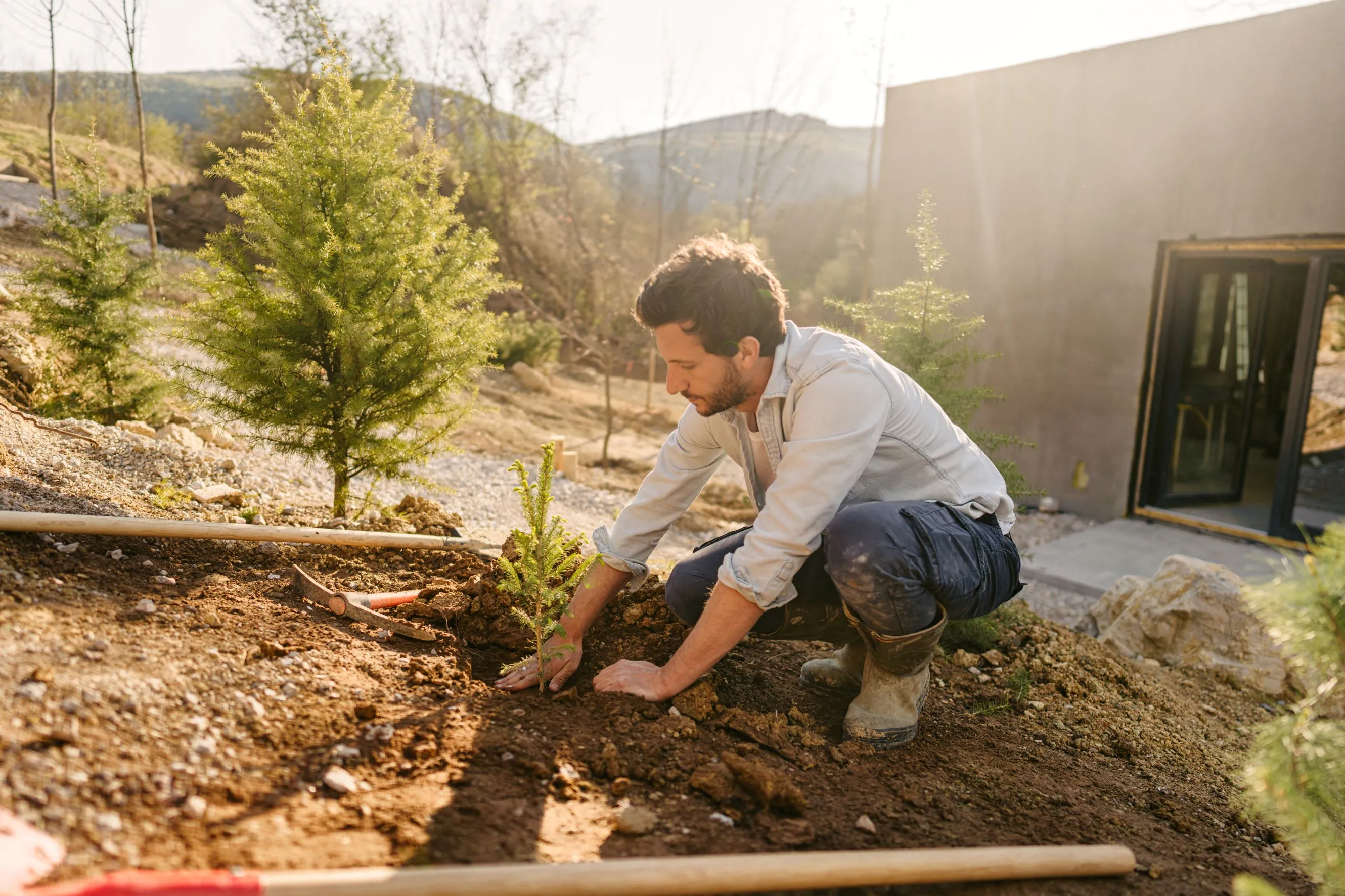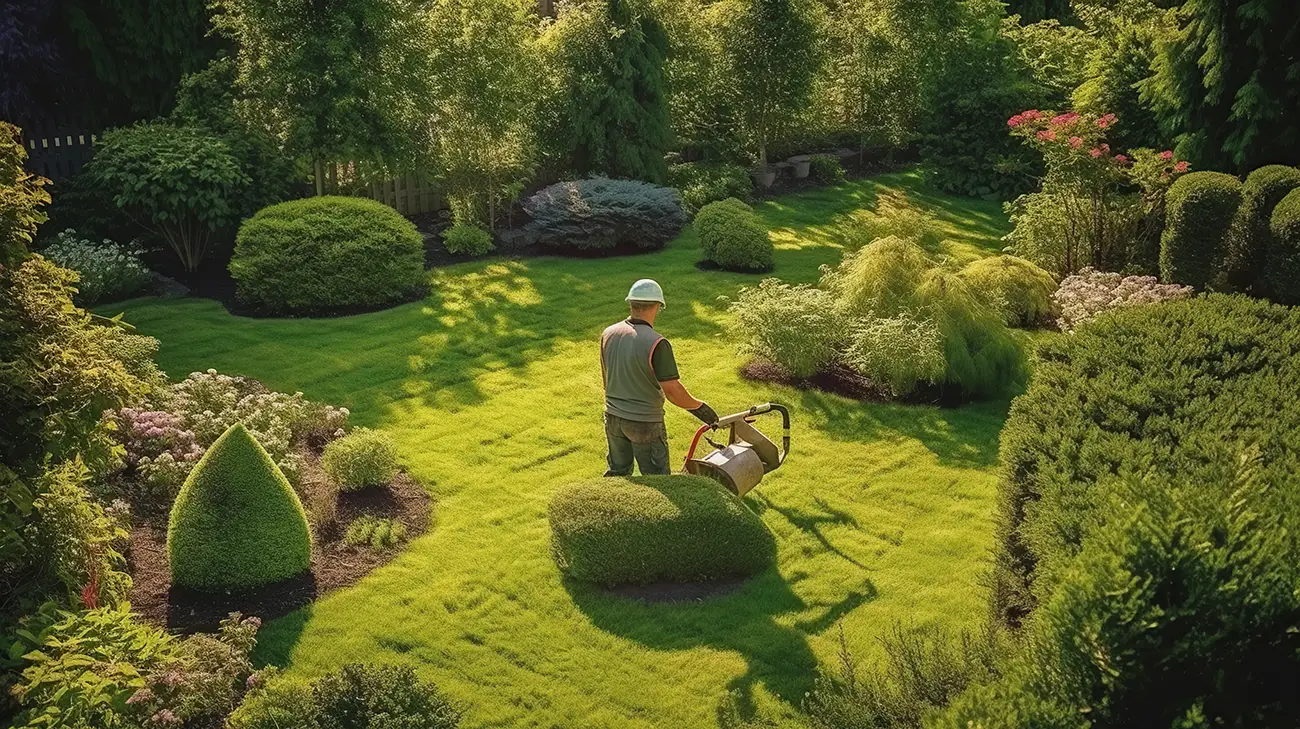
Environmental Landscaper
Environmental Landscaper
As an Environmental Landscaper, you’ll help protect and regenerate native bushland, wetlands, and waterways. Whether you’re planting trees, removing invasive species, or restoring ecosystems, your work supports biodiversity and brings damaged environments back to life.

Salary Range
$30 – $45/hour (Entry-level Award wages; increase with experience and year level.)

Recommended Training
Certificate III in Conservation & Ecosystem Management

Job Listings
Browse current job openings and take the next step in your landscaping career.
Job Overview
Environmental Landscapers work in the field to restore, protect, and care for Australia’s natural environments. You might work in bushland, creek corridors, wetlands, or revegetation sites — removing invasive plants, planting native species, managing erosion, and maintaining ecological health.This is a physical, outdoors role with real environmental impact. You’ll be part of a team delivering long-term projects for councils, landcare groups, environmental contractors, or restoration firms. Some people call this bush regeneration, revegetation work, or ecological restoration, but the goal is the same: healthier ecosystems and landscapes that last.

Tasks & Duties
Planting native trees, grasses, and shrubs to support regeneration
Removing invasive weeds using manual or chemical methods
Installing turf, plants, soil, mulch, and irrigation systems
Applying mulch, sediment barriers, or erosion control materials
Pruning, clearing debris, or maintaining natural walking tracks
Operating brush cutters, chainsaws, or hand tools safely
Identifying native and invasive species to guide restoration work
Recording work completed or monitoring site progress
Following environmental and safety protocols, especially in sensitive areas
Working alongside team leaders, supervisors, or ecologists
Follow environmental safety procedures and complete WHS checks
How to Become an Environmental Landscaper
There’s no single path into this role. Some people start as field assistants or labourers and work their way up. Others begin through a traineeship or formal training in land and conservation management.
- Certificate II in Conservation and Ecosystem Management (AHC21024) A good foundation course that covers weed control, basic plant care, and safe tool use.
- Certificate III in Conservation and Ecosystem Management (AHC31421) The most common qualification in this space includes erosion control, compliance, native plant ID, and revegetation practices.
Career Progression & Pathways
This pathway opens the door to long-term careers in bush regeneration, land management, and environmental restoration — from fieldwork to leadership.
Starter
Trainee – Conservation & Ecosystem Management, Field Assistant, Bushland Crew Member
Skilled
Bush Regenerator, Environmental Services Technician, Landcare Field Officer, Team Leader
Advanced
Site Supervisor, Natural Resource Manager, Environmental Consultant, Compliance Officer, Project Coordinator – Conservation, Business Owner

Already Working in Landscaping or Horticulture?
If you’ve been doing bush regeneration or land care work, you may be eligible for Recognition of Prior Learning (RPL). This can shorten the time it takes to become qualified. Ask a training provider to assess your skills.
Other Key Considerations:
- White Card (Construction Induction) Required to work on school, council, or public infrastructure sites.
- ACDC Licence (QLD) This may be supported if weed control is part of your role.
- Chainsaw Certification Common for those doing natural area maintenance or storm clean-ups.
- Manual Driver’s Licence Essential for accessing remote sites and transporting tools or trailers.
- First Aid Certificate Often preferred for roles involving public spaces, schools, or recreational facilities.
- Professional Industry Membership Joining an industry association like Landscape Queensland can connect you to professional networks, mentorship opportunities, and support services throughout your career.
“Working in environmental landscaping gives you the chance to restore ecosystems and protect natural spaces. It’s hands-on work that leaves a real legacy.”

Skills, Attributes & Experience
You’ll learn most skills on the job — but this is a great fit if you are:
- Passionate about nature, native plants, and biodiversity
- Strong work ethic and a positive attitude — ready to show up and get involved
- Physically fit and comfortable working outdoors in all conditions
- Confident using tools like brushcutters, chainsaws, and sprayers
- Able to identify native and invasive plant species
- Focused on safety, environmental protection, and WHS protocols
- Observant, team-oriented, and ready to follow site directions
- Prepared to work in rugged or remote environments
- Good at recording data or logging site progress

Not Sure Where to Start?
Take our interactive career quiz to discover which landscaping pathway best matches your skills and interests.
